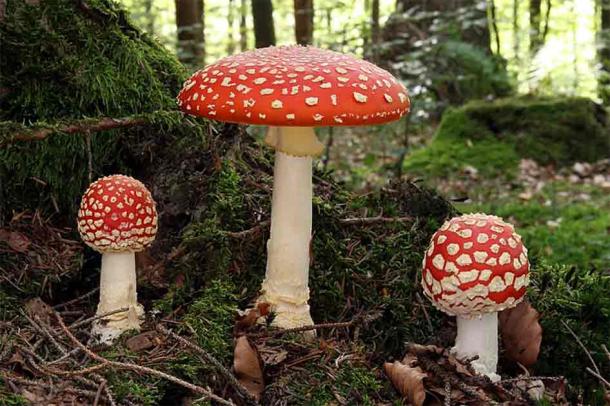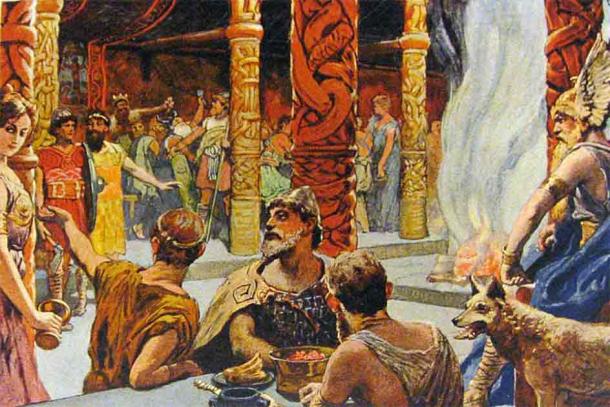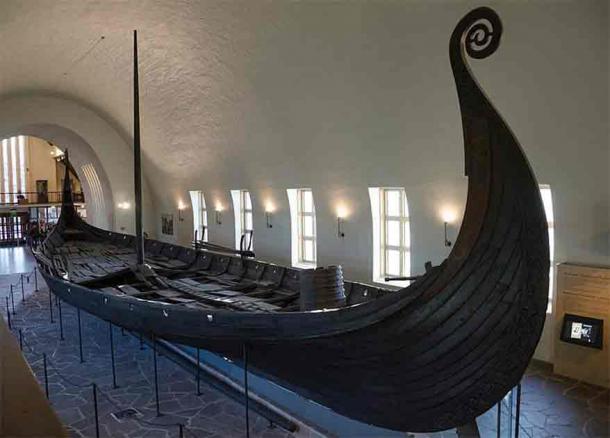Viking Drug Use: From Riotous Parties to Berserker Fury
The Vikings stand as legendary figures, their exploits on the seas and battlefields shrouded in myth and mystery. Yet beyond their tales of conquest and exploration lies a lesser-known aspect of Viking culture: their relationship with mind-altering substances.
From the halls of Valhalla to the depths of the dark Nordic forests, some believe the Vikings indulged in a variety of intoxicants, from potent mead brewed from honey to hallucinogenic mushrooms harvested from the wild and maybe even cannabis. It’s even said the Viking’s most fearsome warriors, the Berserkers, were fueled by narcotics.
As is so often the case with Viking history, separating fact from fiction isn’t easy when it comes to Norse drug use.
A Match Made In Valhalla?
The Vikings have a pretty wild reputation, and they were indeed no strangers to revelry and celebrations. Feasts, gatherings, and festivals served as integral parts of their social fabric. Much like many social gatherings today, imbibing certain drugs was a central part of how Vikings socialized.
Their primary drug of choice was, unsurprisingly, alcohol. Not just a means of relaxation and merriment after a hard day’s raiding, it was a symbol of social status and hospitality (a key aspect of Viking culture). Mead, often referred to as the “drink of the gods,” held particular reverence among the Norse with reference being made to it throughout various mythological tales, sagas, and rituals.
But it is likely they didn’t stop there. Over the years there has been much speculation over what other drugs the Vikings may have consumed, especially the potential use of hallucinogenic substances among the Norse.

It has long been suspected that Vikings used mushrooms such as this Amanita muscaria for their psychoactive properties (Holger Krisp / CC BY 3.0)
References in sagas and folklore hint at the consumption of psychoactive mushrooms, such as Amanita muscaria, known for their mind-altering properties. While evidence for widespread use remains elusive, the possibility of occasional experimentation cannot be discounted.
But before we begin speculating as to what the Vikings may have used, let’s focus on what we know they definitely used. In Viking society, alcohol consumption was a deeply ingrained cultural practice that permeated every aspect of life. Think British pub culture, but even more fundamental and much more spiritual.
- History of the Vikings: All You Need to Know
- Drugs in Ancient Cultures: A History of Drug Use and Effects
Mead halls were central to Viking social life. They served as venues for feasting, oral storytelling, and encouraging camaraderie. More than just a trip to the local pub or bar, these gatherings were often more like sacred rites, where the bonds of kinship were strengthened and the deeds of heroes, dead and alive, were celebrated.
Mead halls were in fact so central to Viking life that their version of heaven, Valhalla, was usually portrayed, in part, as a mead hall. In Norse mythology, Valhalla was pictured as a great mead hall where the king god, Odin, received half of those who died in combat.
These warriors, chosen from the slain by the Valkyrie, were known as the Einherjar. While there they engaged in feasting and drinking, consuming heavenly mead while waiting for Ragnarök.

There was definitely a lot of drinking in Valhalla (Emil Doepler / Public Domain)
The mead itself was almost sacrosanct. Known as “the drink of the gods,” its production wasn’t just a practical part of life. It had a spiritual bent, with mead symbolizing abundance, fertility, and the divine.
Besides mead, ales were another staple of the Viking diet. Brewed from barley and other grains, each household usually brewed its own, tailored to the tastes of those who lived there. Alehouses known as "skáls" dotted the Norse landscape. These offered weary travelers and warriors a warm fire, tasty food, and a mug of ale to chase away the day's woes.
This isn’t to say it was all positive. The Vikings clearly weren’t immune to alcohol’s more negative effects. Excessive drinking often led to bouts of raucous behavior and feasts could descend into drunken brawls. This often led to chieftains enacting laws to curb excessive drinking to maintain order within communities and avoid drunken brawls devolving into blood feuds.
So, in many ways, Viking alcohol consumption wasn’t that different from how many cultures drink today. It shaped their social interactions, religious rituals (like Catholic Communion), and even political alliances.
Something Stronger?
Nobody is likely to find it surprising to learn that the Vikings liked a pint. It’s like stating pirates drank rum. More interesting, perhaps, are the tantalizing clues that suggest hallucinogenic substances may have worked their way into Norse rituals and practices. There’s little concrete evidence but references in sagas and folklore hint at the potential use of psychoactive plants and fungi by the Vikings.
The most popular candidate is the fly agaric mushroom, Amanita muscaria. This vibrant red-and-white fungus is well-known today for its hallucinogenic properties.
Widely distributed across Scandinavia, this mushroom is depicted in various Norse artworks and may have held mystical significance for the Vikings. Some scholars speculate that it was consumed by berserkers before battle to induce a trance-like state and enhance their ferocity in combat.
Another strong candidate is the hallucinogen henbane or Hyoscyamus niger. This toxic little plant comes with some interesting psychoactive effects. We know that it was widely used in medicine and witchcraft during the Middle Ages so it wouldn’t be too surprising to learn it was known to the Vikings. Its inclusion in magical rituals and its association with the Norse goddess Freyja suggests a possible role in religious ceremonies or shamanic practices.
As to why the Vikings might have imbibed hallucinogens, the reasons were likely varied. Throughout history, diverse cultures have used such substances for spiritual, medicinal, and recreational purposes and that’s probably true for the Vikings.
- Getting High with the Most High: Drugs in the Bible
- Discovering the Drengr Code: The Truth About Viking Ethics
In religious contexts, psychoactive substances may have been employed to induce altered states of consciousness, facilitating communication with divine beings or ancestral spirits. Additionally, hallucinogens may have been used medicinally to alleviate pain, induce visions, or treat various ailments.
Evidence from Archaeology and Sagas
Speculation is all well and good, but do we have any evidence? While the written records of the Vikings offer exciting glimpses into their possible use of hallucinogens, archaeological discoveries provide additional insights into this intriguing aspect of Norse culture. Excavations across Scandinavia have unearthed artifacts and residues suggestive of psychoactive substance use among the Vikings.

The Oseberg ship burial contained evidence of Viking drug use, including a bucket of alcohol (Petter Ulleland / CC BY-SA 4.0)
One of the strongest pieces of evidence comes from the Oseberg ship burial, excavated by Swedish archaeologist Gabriel Gustafson and Norwegian archaeologist Haakon Shetelig in 1904–1905. The site dates back to the early 9th century and among the artifacts recovered from this Viking treasure trove was a small wooden bucket (known as the Buddha Bucket) containing what was probably a beverage. Chemical analysis of residues from similar vessels found at this and other Viking sites has revealed traces of various substances, including alcohol and possibly hallucinogenic compounds.
Additionally, the presence of botanical remains associated with psychoactive plants further supports the hypothesis of Viking drug use. Pollen analysis from archaeological sites has identified the presence of plants such as henbane, a known hallucinogen, suggesting that these substances were cultivated or collected by the Vikings for ritual or medicinal purposes.
More speculatively, cannabis seeds have been found at numerous Viking sites, including the Sosteli Iron Age Farm and the Oseberg ship burial mound. We know for a fact that the Vikings cultivated hemp for use in textiles and rope making, but did they ever try smoking it? We can’t be sure.
However, the cannabis seeds found at the Oseberg ship site were found in a pouch belonging to an old woman aged between 70 and 80. Scans have shown she had various health problems, likely including cancer that led to her death. Some scientists believe she was likely using cannabis for pain relief, much like many sufferers do today.
Outside of archaeological evidence references to hallucinogens (but not cannabis) crop up in the Norse sagas. In the poem "Völuspá,” part of the Poetic Edda and dating back to the 13th century AD, the seeress recounts her journey through the nine worlds after consuming a mysterious potion, hinting at the transformative power of visionary experiences. Similarly, the saga of the berserker Úlfheðnar describes warriors entering a state of frenzied rage after ingesting a potent brew, possibly containing psychoactive ingredients.
Did Berserkers Take Drugs?
This brings us nicely to the berserkers. These are some of the most iconic figures of Norse mythology, legendary warriors renowned for their unrelenting ferocity and fearlessness in battle. Usually depicted as clad in bear or wolf skins and wielding weapons with unmatched prowess, these elite warriors struck terror into the hearts of their enemies and inspired awe among their allies.

Did drug use give Viking warriors the ability to enter a berserk rage? (Unknown Author / Public Domain)
Central to all the excitement around berserkers is their supposed ability to enter a frenzied state known as "berserkergang," during combat. In this trance-like state, berserkers were said to possess almost superhuman strength, endurance, and an insatiable thirst for bloodshed. The exact nature of berserkergang is still subject to speculation with some theories suggesting a connection to psychoactive substances.
A popular hypothesis posits that so-called Berserkers may have ingested hallucinogenic substances like fly agaric mushrooms to induce this heightened berserk state. These kinds of psychoactive drugs have been known to heighten the senses, dull pain, and induce feelings of invincibility. If true this would make them formidable adversaries on the battlefield, akin to their portrayal in the sagas.
Another theory suggests the berserker rage had nothing to do with drug use. Instead, it posits that berserkergang may have been a form of ritualistic possession, wherein warriors invoked animal spirits or ancestral deities to imbue them with divine strength and protection.
The wearing of animal skins and adopting animalistic behavior may have served as symbolic gestures to channel the power of these otherworldly entities. This would trigger a psychosomatic response akin to the placebo effect.
The stories surrounding these frenzied warriors fueled by intoxicating substances have long captured the popular imagination but how accurate are they? As is often the case with Viking history, separating fact from fiction proves challenging. While Norse sagas and historical accounts depict berserkers as fearsome fighters, the extent to which they relied on drugs or alcohol to achieve their legendary status remains uncertain.
Some scholars think the stories surrounding the berserkers have been blown out of proportion and the idea of them being drug-fueled warriors is likely exaggerated or misinterpreted. They think it’s much more likely that the berserkers drew upon psychological techniques, such as the above self-induced trance states or intense battle rituals, to psych themselves up for combat.
If this is true then their actual prowess in battle is most likely exaggerated. The Vikings wouldn’t have been the first or last culture to exaggerate after all.
It’s not even certain that the term “berserker” was used to refer to a specific set of enhanced warriors. Some historians think it was likely used broadly to describe any exceptionally fierce or fearless fighter, regardless of their methods or motivations. The association of berserkers with drug use may have been a literary device employed by saga authors to enhance the mythic quality of their tales.
On the other hand, nothing about the idea of berserkers using drugs to enhance their performance is that “out there.” Human beings have been using narcotics of some kind or another since we first came into being.
Likewise, the supposed “berserker state” isn’t that far-fetched. Plenty of drugs, everything from amphetamines and cocaine, Hallucinogens like LSD or psilocybin mushrooms, bath salts, and PCP are known to cause similar effects.
Using drugs to enhance one’s warriors also isn’t particularly unusual. Ancient civilizations like the Greeks, Romans, and Assyrians (amongst others) are all believed to have made use of potent herbal concoctions.
Modern armies are no stranger to the practice either. During WW2, the Nazis dosed their soldiers with methamphetamines and the English army experimented with LSD in 1963. That’s before you even get started on the abundant drug use encouraged in the U.S. military during the Vietnam War.
With all that being said, it almost begins to sound unlikely some Viking warriors, especially the Berserkers, weren't on something.
A Definite Possibility
At the end of the day, a lot more archaeological research will have to be done before we can draw a definitive conclusion as to what drugs the Vikings made use of. While alcohol undoubtedly played a significant role in Norse society, the extent of hallucinogens and other drug use remains a subject of speculation.
That being said, humans have been using drugs for a long, long time and it seems unlikely that the Vikings were any different. The Viking attitude towards intoxication and social bonding mirrors aspects of modern society.
Despite the temporal and cultural differences, the human experience often remains remarkably consistent across time. By looking at Viking culture, we not only gain insights into the past but also recognize the universal threads that connect us to our ancestors.
Top image: Did drugs fuel Viking social gatherings and make them formidable and fearless warriors? Source: ContentHub / Adobe Stock.
References
Seaver. C. 2023. What Was Drug Use Like in Viking Culture? History Defined. Available here: https://www.historydefined.net/what-was-drug-use-like-in-viking-culture/
Bennett. J. 2023. Vikings and drugs: Were the berserkers really high on magic mushrooms? Viking Herald. Available here: https://thevikingherald.com/article/vikings-and-drugs-were-the-berserkers-really-high-on-magic-mushrooms/654
Schjølberg. U. 2019. Crazed Viking warriors may have been high on henbane. Science Norway. Available here: https://www.sciencenorway.no/drugs-history-plants/crazed-viking-warriors-may-have-been-high-on-henbane/1571431
Murphy. P. 2023. Were Viking Berserkers Fueled By Drugs? Medium. Available here: https://medium.com/digital-global-traveler/were-viking-berserkers-fueled-by-drugs-fe20bb8ce9f5

















